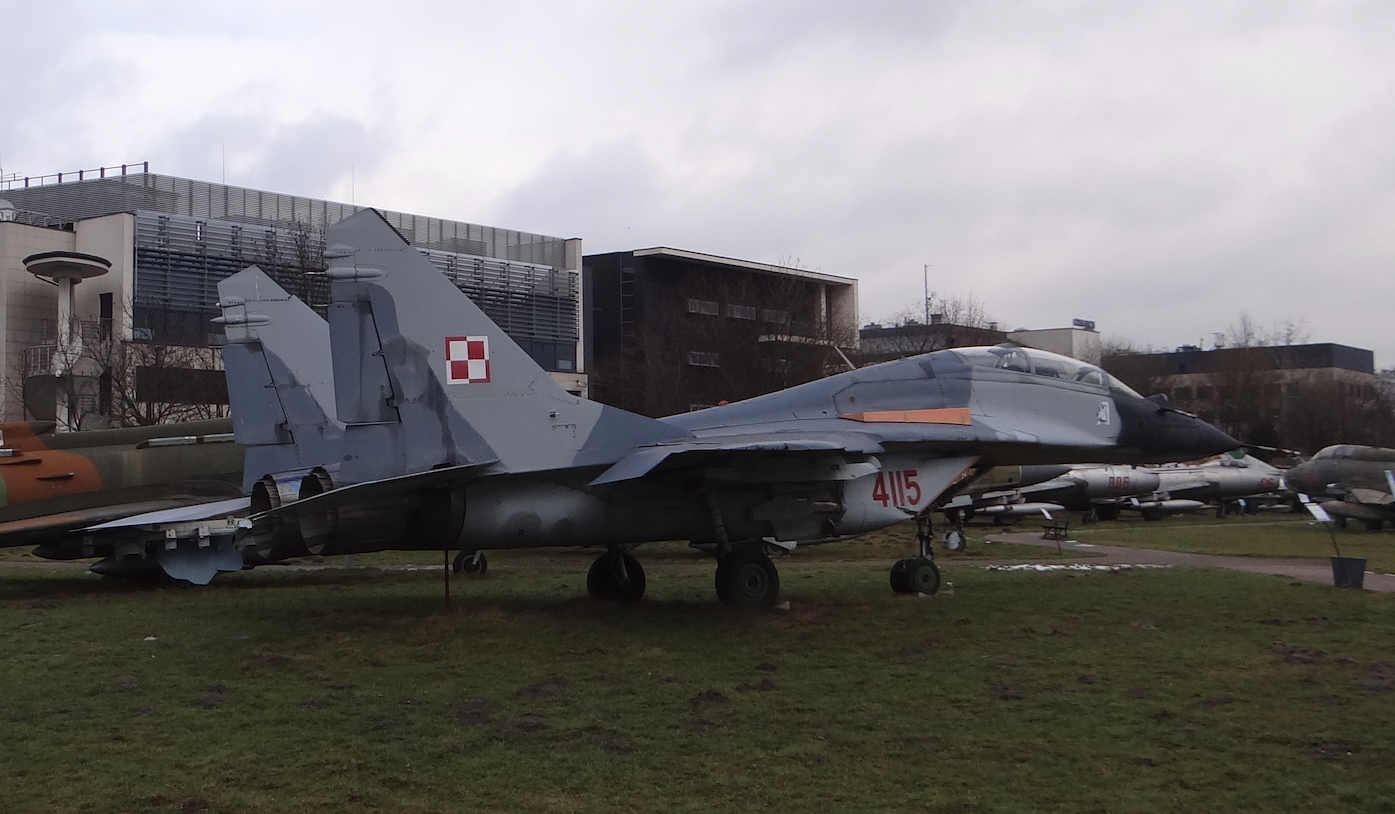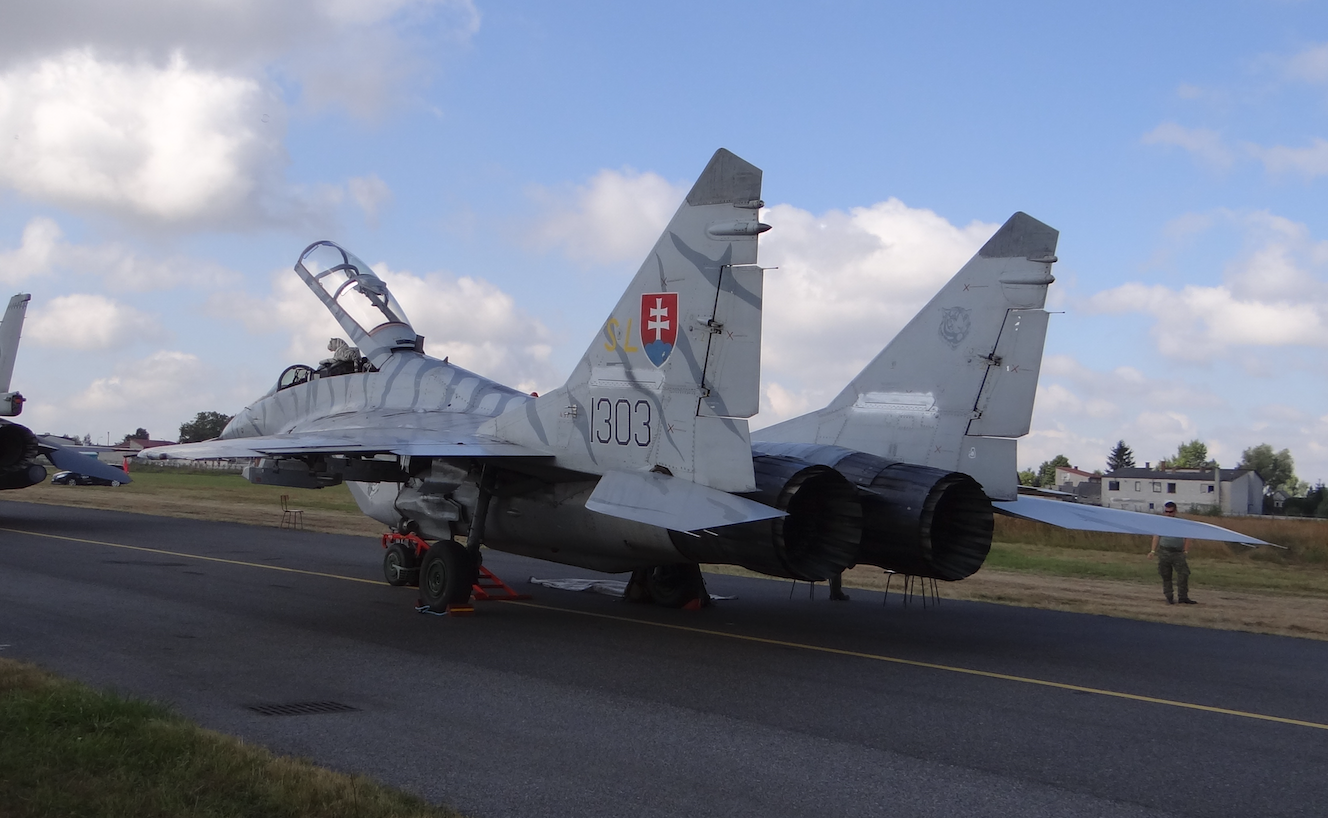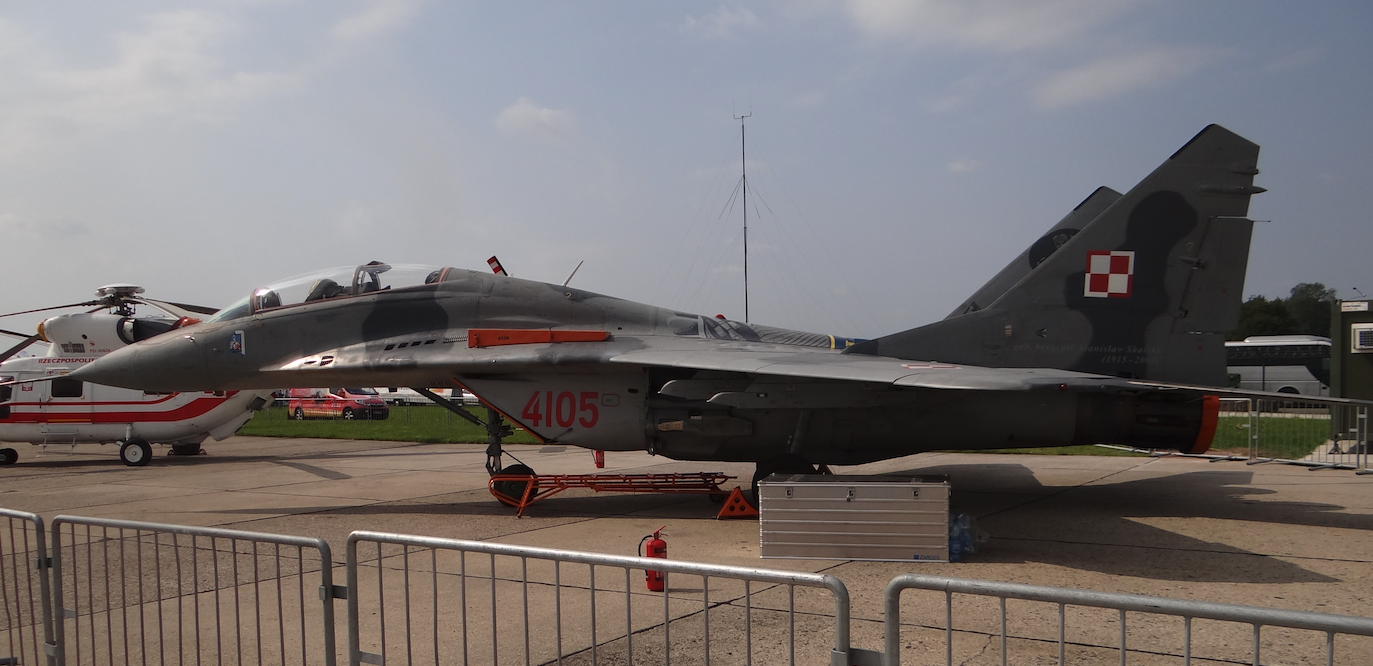Kraków 2017-08-24
288 Section 1989-07-31
MiG-29 UB – Two-seat combat aircraft .
MiG-29 UB in Poland.













The school-combat version 9.51 – MiG-29 UB. 198 year.
The MiG-29 UB aircraft is a two-seater version of the MiG-29. The plane received a cockpit with seats set in tandem. The entire front section of the hull was rebuilt. The aircraft was deprived of the radiolocation station, mainly due to its significant mass. As a result, the aircraft lost a significant part of combat assets. It is practically unsuitable for effective independent operation and can only function as a single-seater support.
At the end of the basic cycle of testing single-seat machines, work began on the development of a two-seater military-combat version of the aircraft named MiG-29 UB. As soon as possible, the development and introduction of this version was made as soon as possible. Therefore, the constructors decided to interfere in the airframe structure as little as possible.
The first prototype of the MiG-29 UB took off in the air 1981-04-29. In total, three prototypes were created. Shortly after launching the production of the single-seat version at the Sokół plant in Gorki, the production of MiG-29 UB began. The first planes arrived in Soviet aviation units in 1985. As in the case of single-seat airplanes, training and fighting were produced in three variants: 9.51, 9.51A, 9.51B. The first photographs of the aircraft were presented in the press to the world in 1987.
The airplane was built in a tandem arrangement with the place of the instructor in the rear cabin. An additional seat was added to the existing cab. The length of the hull only increased by 10 cm, however, it caused the necessity of removing the radiolocation target, and thus the inability to carry R-27 R missiles. The capacity of the fuel tanks remained unchanged but some operating limitations were introduced. During the flight the maximum rake angles are up to 24 degrees and the maximum speed is limited from Ma-2,35 to Ma-2,1. Due to these changes, the aircraft received a modified control system called SAU-451-03UB. The pilot’s cabin has been placed on a small elevation in relation to the pilot-student’s cabin, after all, its rich buildings and the headrest of the front seat limits the field of view to the front. To improve the visibility of the instructor during takeoff or landing, he received a foldable periscope. The pilot-instructor in the second cabin did not receive a HUD transparent indicator, however its display is presented on the IPW-31 monitor indicator. To fully utilize the advantages of the school airplane, in the location previously allocated for the HUD indicator, an airplane damage simulation panel was installed allowing for artificial depiction of the technical situation in the first cabin (student). Importantly, despite the inability to carry and use R-27 R missiles, the simulation system allows training of their use. MiG-29 UB also does not have mounted flares and dipoles type BWP-30-26M. The K-36 catapulted seat enables rescue in the 80 – 1,300 km / h range, from a height of 0 m.
Written by Karol Placha Hetman
